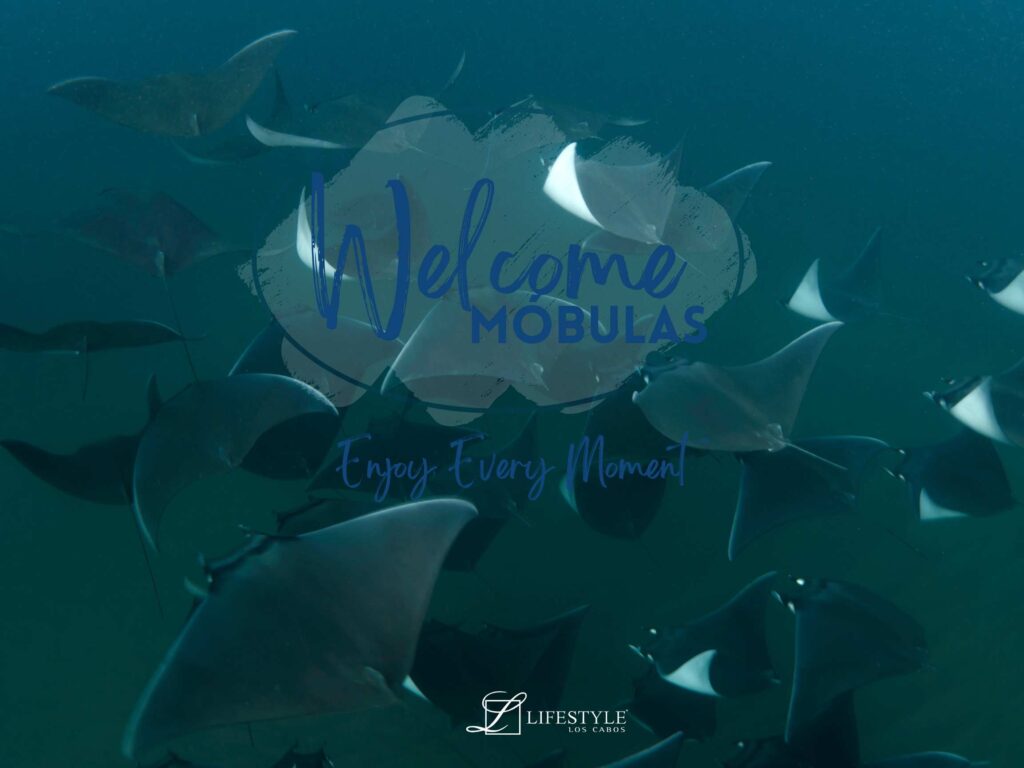Mobula season is here along all the coasts of our peninsula. Between the months of May, June, and July, when the water temperature begins to change, these spectacular creatures start to appear. For lovers of the sea and diving, this is the perfect time, where marine experiences become fascinating with their acrobatic leaps and magnificent swimming ability, forming large groups of individuals.
The most common species found in Baja California Sur is the Munkiana Mobula or Munk’s Devil Ray.
These leaps can reach a height of up to two meters. They typically grow up to 1.1 meters and weigh approximately 30 kg.
Mobulas are smaller than their manta ray cousins; their body coloration ranges from dark gray to deep blue, with a white belly.
It is fascinating to see how these beautiful creatures function in groups; Their migration is one of the most beautiful sights to see, as they congregate in thousands, forming impressive swarms of movement in the sea, forming the great “mobula aggregation.”
Mobulas are a species characterized by a filter-feeding style of feeding. This means they consume small organisms such as plankton, small crustaceans, and also fish, filtering the water to consume them.
It’s crucial to remember that these creatures, like all marine populations, are in dire need of environmental protection. Their habitats must be safeguarded, and their reproductive process must be preserved. With a relatively low reproductive rate, they are highly susceptible to the detrimental effects of marine pollution. This vulnerability underscores the urgent need for conservation efforts.
In our region, we are fortunate to have established marine protected areas that promote sustainable fishing practices and educate the local population and the numerous tourists who visit our destination each year. These efforts, coupled with ongoing scientific studies, provide a solid foundation for the protection of mobulas and all marine species in our vibrant seas, reassuring us that we are well-informed and proactive in our conservation efforts.
Good management of tourism is also a necessary tool to continue enjoying these marine spectacles. Boat trips, yacht tours, and other activities, as well as diving and snorkeling, allow us to see these creatures up close, which generates a fundamental commitment to not disturbing the regular interaction of these species. Ecotourism, or responsible tourism, is very important for good management so that future generations can continue enjoying the immensity of these beauties. Researchers Marta Palacios, Melissa Cronin, and Nerea Lezama-Ochoa founded Mobula Conservation in 2020. A recent study they conducted revealed that mobulas are caught in 43 countries and consumed in 35.
According to this research, in Latin America, fishing is primarily for meat, while in other African and Asian countries, in addition to beef, the gill plates are also consumed.
Often, when mobulas are not the primary target of fishing, they end up in fishing nets, causing significant problems with the number of species extracted without a specific objective. According to studies, nearly 200 individuals are accidentally extracted.
Suppose you would like to take marine tours to observe these wonders in a friendly and respectful manner. In that case, we can provide you with the most reliable and recommended equipment so you can have a wonderful experience close to all these spectacular marine species.
LIFESTYLE, along with its entire team, looks forward to spending wonderful days in Los Cabos, a destination that has it all.
Read also: Amazing encounters with Mobula rays in BCS, a must-see natural event that adds magic to your Cabo escape.

